The OCZ Agility 3 fills the mid-range gap of OCZ’s SSD lineup; but don’t let “mid-range” or “mainstream” fool you. The Agility 3 uses a SATA 6Gb/s interface and the SandForce SF-2281 processor to drive 525MB/s read speeds, 500MB/s writes and 45,000 4KB random write IOPS – those are just a hair under the Vertex 3 specs. OCZ offers the Agility 3 in three capacity points, 60GB, 120GB and 240GB – all leveraging Intel/Micron 25nm NAND.
The big question is – how is the Agility 3 different from the scorching hot and very similar Vertex 3, and to a lesser extent, the Vertex 3 Max IOPS. Both use the same SandForce processor, SATA 6Gb/s interface, firmware and very similar 25nm Intel/Micron NAND. The key difference is revealed in the NAND flash part numbers used in each model. While the Vertex 3 uses synchronous NAND, the Agility 3 uses more affordable asynchronous NAND. In terms of performance, this essentially means that the Agility 3 will hang with the Vertex 3 in tests that use compressible data, but will fall behind when it comes to handling incompressible data. We’ll dive into the tradeoffs of the NAND as we examine the benchmark scores of both drives in this review.
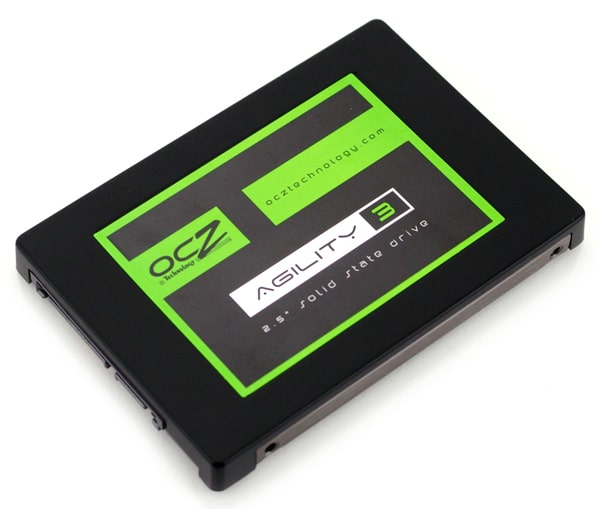
OCZ Agility 3 Specs (240GB)
- Formatted Capacity – 223.57GB
- SATA 6Gb/s interface
- SandForce SF-2281 Controller
- Max Sequential Speeds: up to 525MB/s Read and up to 500MB/s Write
- Random Write 4KB (Aligned): 45,000 IOPS
- 25nm Intel/Micron asynchronous MLC NAND
- Power Consumption: 2.7W Active, 1.5W Idle
- MTBF: 2 million hours
- 3-Year Warranty
Aesthetics
The Agility 3 uses the newer SSD design that OCZ adopted a few months ago. This design makes use of a plastic cover and metal plate, where the older model had a metal body with a flat metal plate screwed into place. Both designs look very attractive.
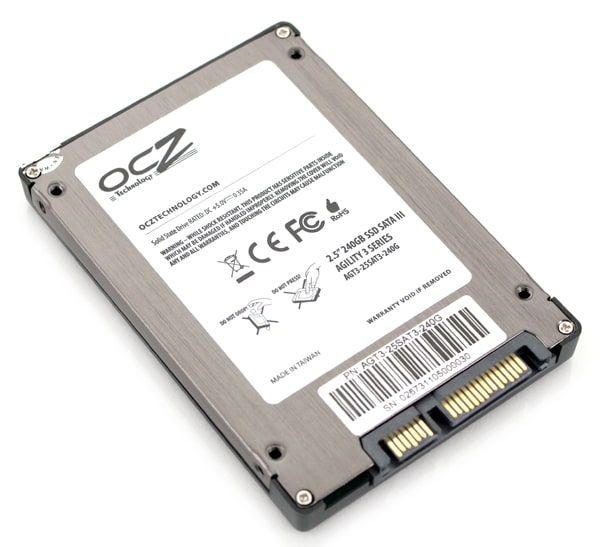
Besides the case itself changing, nothing else from the outside seems to indicate these drives are any different than the past models. The stickers and branding are identical, as well as the information stickers on the back. Comparing the Vertex 3 to the Agility 3, users will note the different color schemes used on each model. Whereas the Vertex 3 makes use of silver and black, the Agility 3 goes with an eco-minded green and black.

The front of the drive features a standard SATA power and data connection, with no debug pins next to the connector.
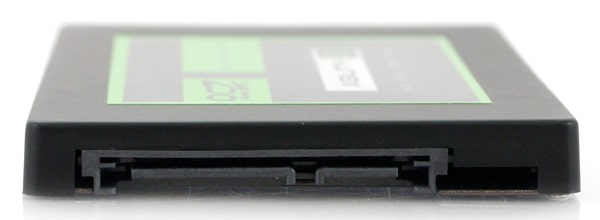
Disassembly
As a warning for those thinking about tearing into their new OCZ Agility 3, know that you void your warranty in the process. Besides trying to get a physical confirmation on what the internals are, there really is no reason to open one of these up during normal usage.
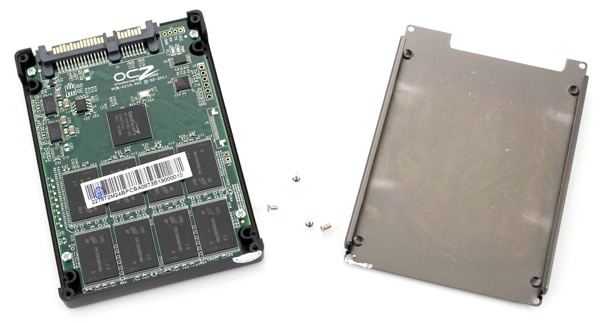
The OCZ Agility 3 is very easy to take apart with a Phillips-head screwdriver. After removing four screws around the perimeter and breaking through the warranty sticker, the top cover comes loose exposing the PCB inside. The circuit board is held in place with four additional screws, although the primary guts of the drive are on top.
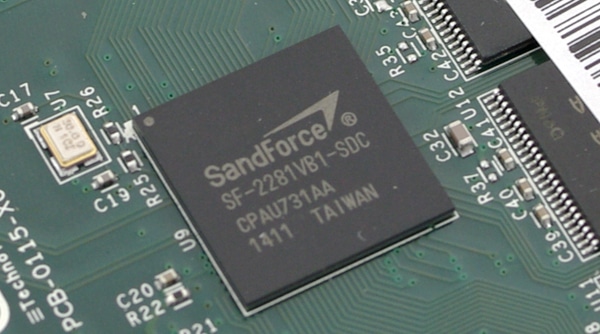
At the heart of the OCZ Agility 3 SSD is a SandForce SF-2281VB1-SDC controller. SandForce processor SSDs interact directly with the flash modules, without a buffer, meaning no board space is taken up by RAM. This also helps save on power and also helps reduce overall size when you shrink the entire layout down to micro-levels.
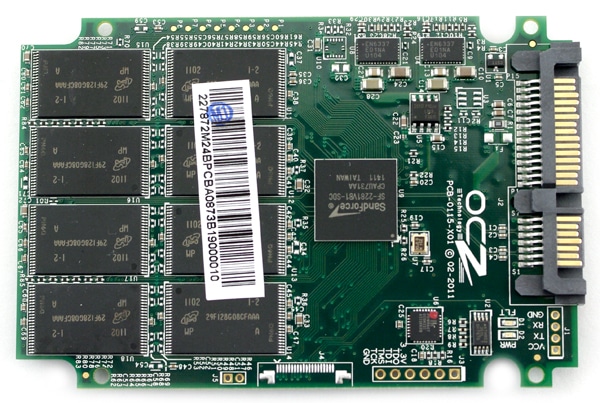
Compared to the regular OCZ Vertex 3 which uses 25nm synchronous NAND, the Agility 3 makes use of sixteen Micron 29F128G08CFAAA 25nm asynchronous NAND pieces. The entire point of using this flash versus the other is the cost of materials. In the case of the 120GB Agility 3, it drops the street price down $65 compared to the Vertex 3.
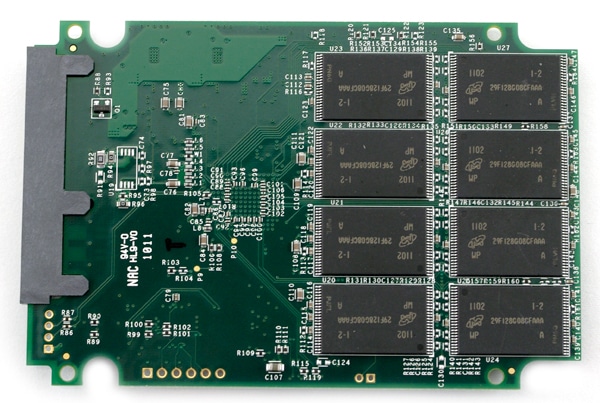
Synthetic Benchmarks
OCZ rates the Agility 3 with a sequential read speed of 525MB/s and a write speed of 500MB/s, which are just 25MB/s shy of the speeds advertised on the Vertex 3. Looking at the benchmarks below, it was very interesting to see how closely the Agility 3 scored compared to the two Vertex 3 models we reviewed.
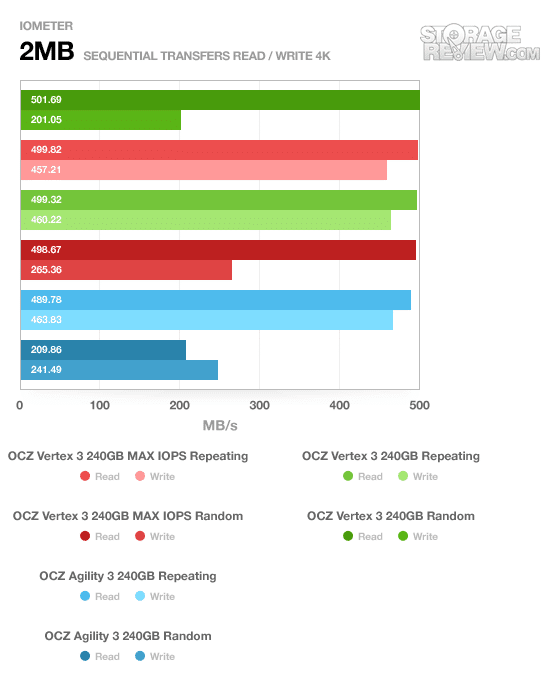
The OCZ Agility 3 measured 489MB/s read and 463MB/s write with repeating data, which was right in the same range as the Vertex 3 and Vertex 3 MAX IOPS. When you switch to random data though, those numbers are just about cut in half, dropping to 209MB/s read and 241MB/s write. This is probably the best comparison when trying to see the difference between synchronous NAND and asynchronous NAND.
Changing to 2MB random transfers, the Agility 3 is able to keep pace with the Vertex 3 working with repeating data, but is yet again nearly halved when tested with incompressible random data.
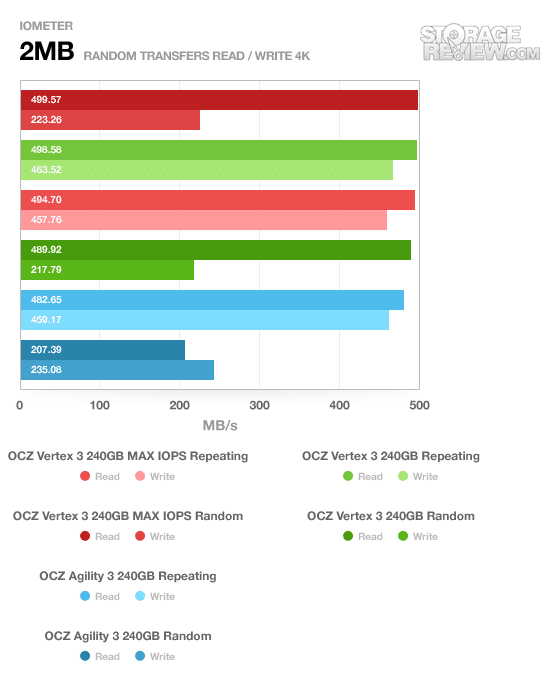
In our random 4K transfer test we didn’t see much, if any, difference between the three SandForce SF-2200 powered SSDs. At most there were 2-3MB/s differences between each model in the repeating and random data tests, but each tested very similar to each other unlike the 2MB tests listed above.
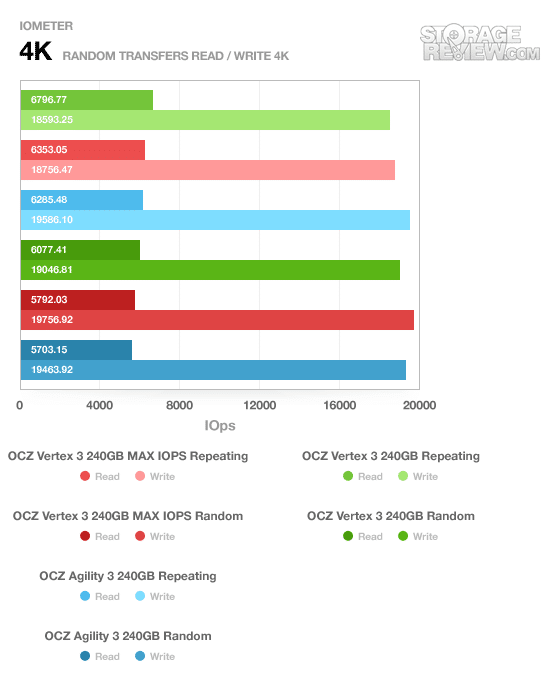
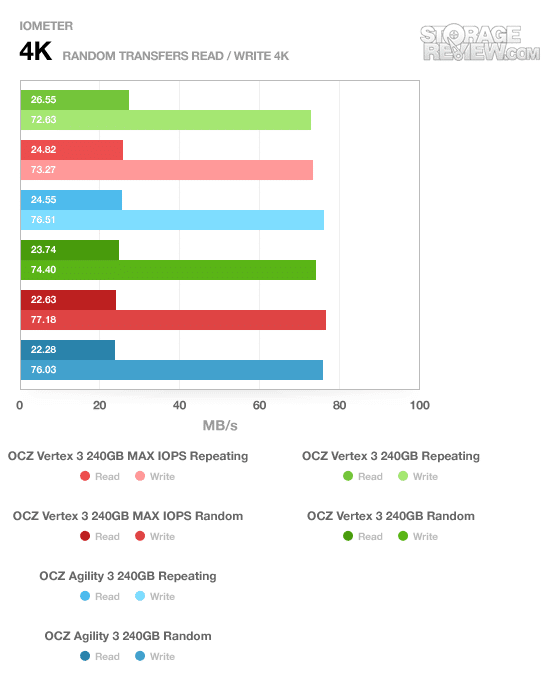
While the quick 4K read and write test above looks at the performance of each drive at a queue depth of one, the next section looks at the performance across a wide range going from a queue depth of 1 to 64. In this area it is interesting to note that OCZ only rates the Agility 3 with a 4K random write speed of 45,000 IOPS. As you can see below, in our tests it nearly doubled that number.
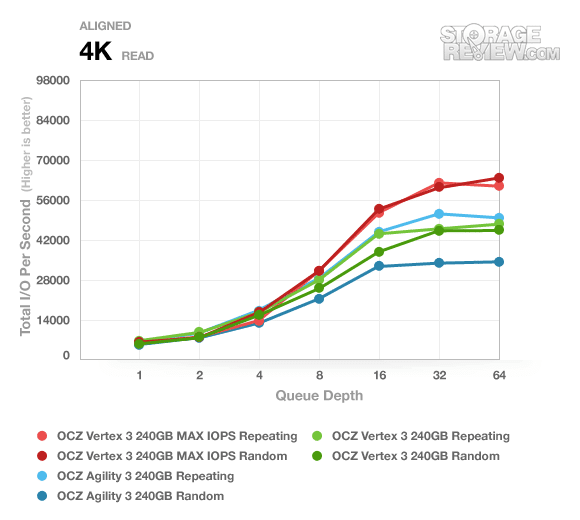
In our ramped 4K read test the Agility 3 was able to hang with the big boys using repeating data, but plateaued after a queue depth of 16.
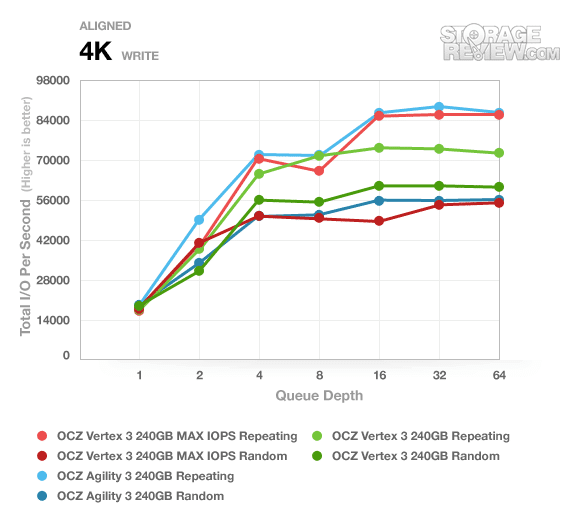
In the 4K random write test the Agility 3 really surprised is, surpassing both of the Vertex 3 and Vertex 3 MAX IOPS SSDs with a max write speed of 88,000 IOPS at a queue depth of 32 using repeating data. Switching to random data it dropped back down into line falling between the Vertex 3 models.
With its very strong 4K write performance, the Agility 3 ranked in positions #2 and #3 in our write latency test for repeating and random data. In terms of max latency it came middle of the pack ahead of the MAX IOPS.
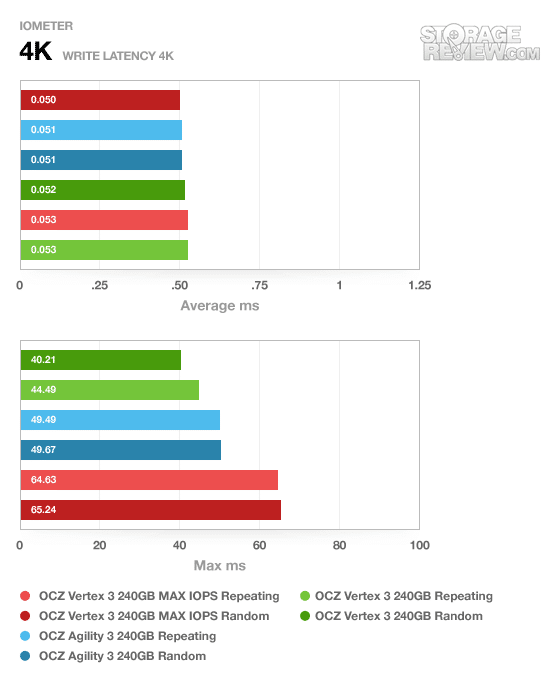
CrystalDiskMark using random data showed similar performance to our IOMeter tests also using random data. It’s funny to look at these numbers and consider you are working with a SATA 6Gb/s drive when speeds barely surpass 250MB/s. Again, this highlights the cost/benefit of the NAND choice.
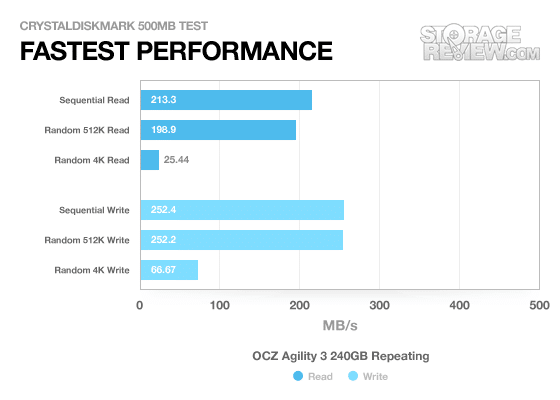
Looking at our IOMeter server profile tests, which put a heavy emphasis on NCQ performance, the Agility 3 showed similar results to our ramped 4K read and write tests. Working with just repeating data it was able to maintain performance similar to the Vertex 3 and Vertex 3 MAX IOPS, but once switched to incompressible data its performance quickly dropped.
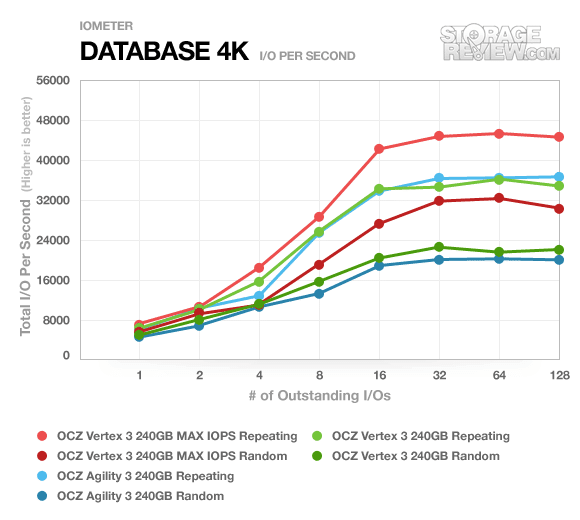
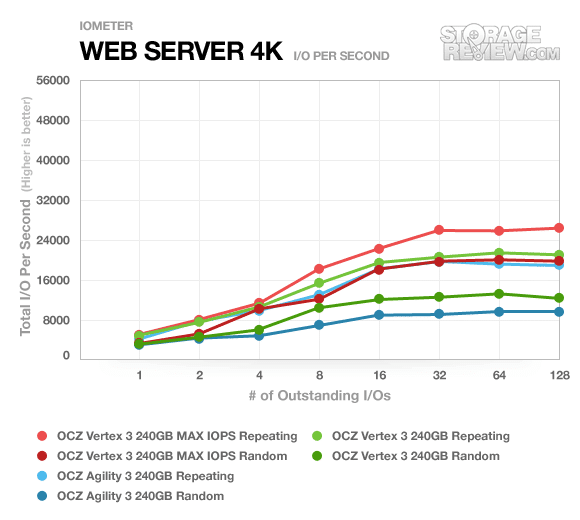
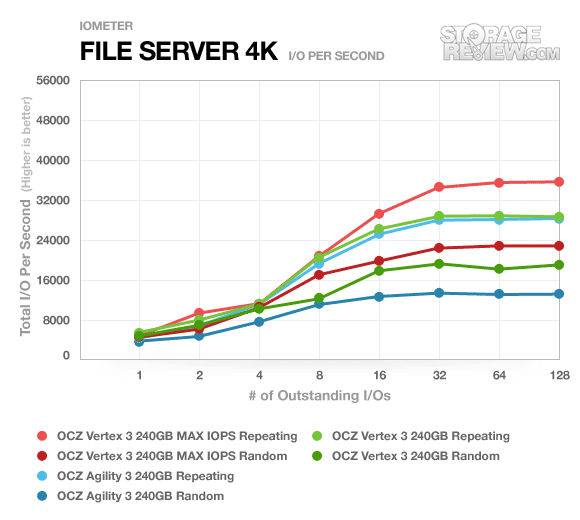
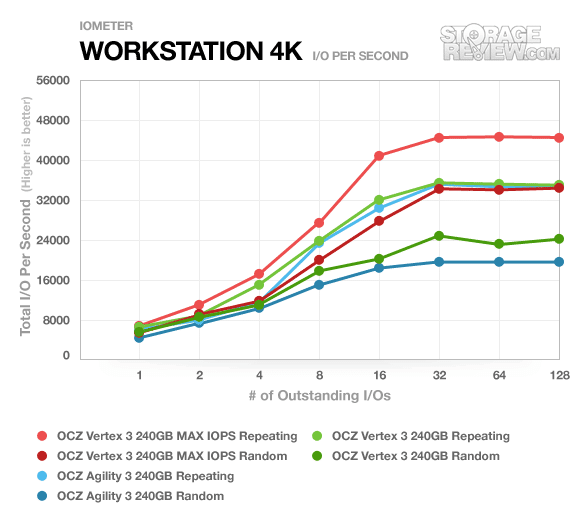
Real-World Benchmarks
If you are new to StorageReview, one thing we try to focus on is how any given drive might perform under real-world conditions. For the average user, trying to translate random 4K write speeds into an everyday situation is pretty difficult. It helps when comparing drives in every setting possible, but it doesn’t exactly work out into faster everyday usage or better game loading times. For this reason we turned to our StorageMark 2010 traces, which include HTPC, Productivity, and Gaming traces to help readers find out how a drive might rank under their conditions.
In this section we added to the newest Vertex 3 and Vertex 3 MAX IOPS charts to put the Agility 3 against its siblings. All of these benchmarks were performed on our newest test bed platform through an Intel Sandy Bridge 6.0Gb/s AHCI interface.
The first real-life test is our HTPC scenario. In this test we include: playing one 720P HD movie in Media Player Classic, one 480P SD movie playing in VLC, three movies downloading simultaneously through iTunes, and one 1080i HDTV stream being recorded through Windows Media Center over a 15 minute period. Higher IOps and MB/s rates with lower latency times are preferred. In this trace we recorded 2,986MB being written to the drive and 1,924MB being read.
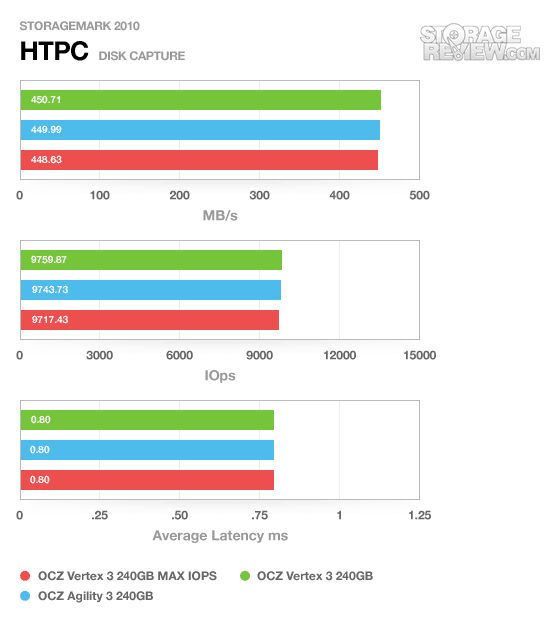
In the HTPC trace very little separated each drive, with the Agility 3 coming in second place above the Vertex 3. All drives came in with nearly identical speeds.
Our second real-life test covers disk activity in a productivity scenario. For all intents and purposes this test shows drive performance under normal daily activity for most users. This test includes: a three hour period operating in an office productivity environment with 32-bit Vista running Outlook 2007 connected to an Exchange server, web browsing using Chrome and IE8, editing files within Office 2007, viewing PDFs in Adobe Reader, and an hour of local music playback with two hours of additional online music via Pandora. In this trace we recorded 4,830MB being written to the drive and 2,758MB being read.
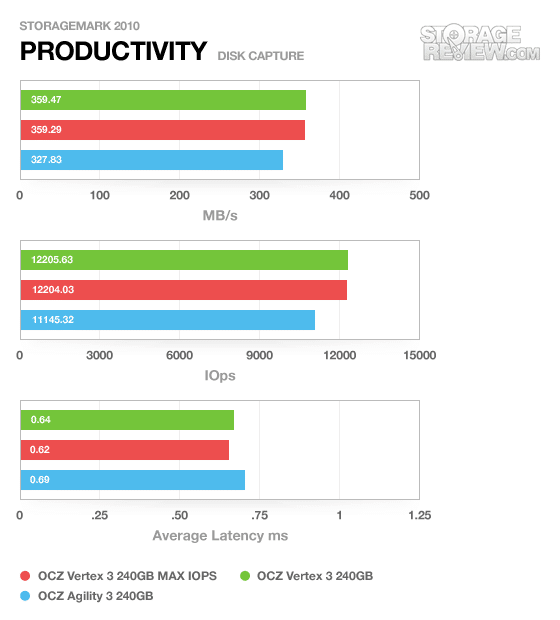
In the productivity trace the Agility 3 slipped by roughly 9% behind the Vertex 3 MAX IOPS. Again, while not as close as the HTPC trace, the Agility 3 still offered very strong performance.
Our third real-life test covers disk activity in a gaming environment. Unlike the HTPC or Productivity trace, this one relies heavily on the read performance of a drive. To give a simple breakdown of read/write percentages, the HTPC test is 64% write, 36% read, the Productivity test is 59% write and 41% read, while the gaming trace is 6% write and 94% read. The test consists of a Windows 7 Ultimate 64-bit system pre-configured with Steam, with Grand Theft Auto 4, Left 4 Dead 2, and Mass Effect 2 already downloaded and installed. The trace captures the heavy read activity of each game loading from the start, as well as textures as the game progresses. In this trace we recorded 426MB being written to the drive and 7,235MB being read.
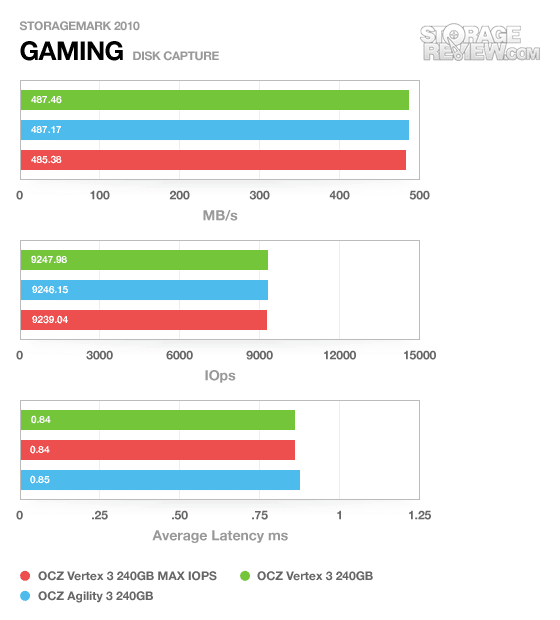
In our Gaming trace the Agility 3 came in 2nd place just has it had in the HTPC trace. Very little was separating each SSD in this benchmark, with the Agility 3 trailing with the slowest average access speed by 0.01ms.
Power Consumption
It seems as though each new SandForce SF-2200 SSD we look at, the power consumption keeps getting less and less. The first big drop we measured was the switch from our pre-release Vertex 3 to the retail version took most values down by a factor of two or three. Next it was with the MAX IOPS version, with its toggle NAND offering faster speeds while conserving power over 25nm flash. Now we see yet another drop going from those models to the asynchronous NAND powered Agility 3.
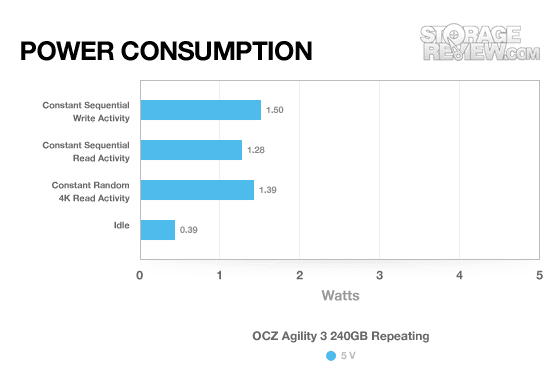
Idle power consumption, which most drives spend their time at, came in at just 0.39 watts. Sequential write activity brought the drive up to a modest 1.50 watts, with pure read activity dropping down to 1.28 watts. Random read activity fell in-between, measuring 1.39 watts. All of these values came in well below what we measured on the Vertex 3 MAX IOPS when comparing the same tests.
Warranty
OCZ offers an industry standard 3-year warranty on the Agility 3 SSD. Currently the only consumer-grade SSD to top this figure is the Intel SSD 320, which offers a five-year warranty. OCZ backs their products with a wide range of support options, ranging from standard technical support to a strong community-based support forum.
Conclusion
If you are in the market for a new SATA 6Gb/s SSD, it’s really hard to look past the latest SandFoce-powered SSDs. Offering chart-topping performance, these models consistently offer some of the highest speeds measured in our benchmarks. Up until now the only thing holding some people back is the cost, which models like the Vertex 3 costing $300 for the 120GB version. In steps the Agility 3… offering similar performance, but at a much lower asking price. It’s aimed squarely at users who really want top-tier speeds, but maybe could sacrifice performance in some areas in exchange for cost savings.
The main difference that affects both price and performance is the asynchronous NAND, compared to the synchronous NAND found in the Vertex 3. For shoppers on a budget, the Agility 3 still offers a huge bargain, even with speeds that taper off with incompressible data. The street price of the 120GB OCZ Agility 3 is $235, compared to $299 for the Vertex 3 and $259 for the Crucial m4 and Intel SSD 510 (after rebate). Slotting in at that price point, the Agility 3 makes a strong argument for itself. For buyers wanting a fast SSD, but not wanting to dole out the cash for the fastest SSD, the Agility 3 is a more than solid option.
Pros
- Great performance for a mainstream targeted audience
- Aggressive pricing compared to Vertex 3
- Lower power consumption than Vertex 3 or V3 MAX IOPS
Cons
- Max sequential speeds cut in half with fully random data
Bottom Line
By mixing the same great SandForce SF-2281 processor with a SATA 6Gb/s interface and lower-cost asynchronous NAND, OCZ was able to straddle the cost/performance fence quite well with the Agility 3. The OCZ Agility 3 will find plenty of traction with buyers wanting near top-end performance without the top-end price.




 Amazon
Amazon